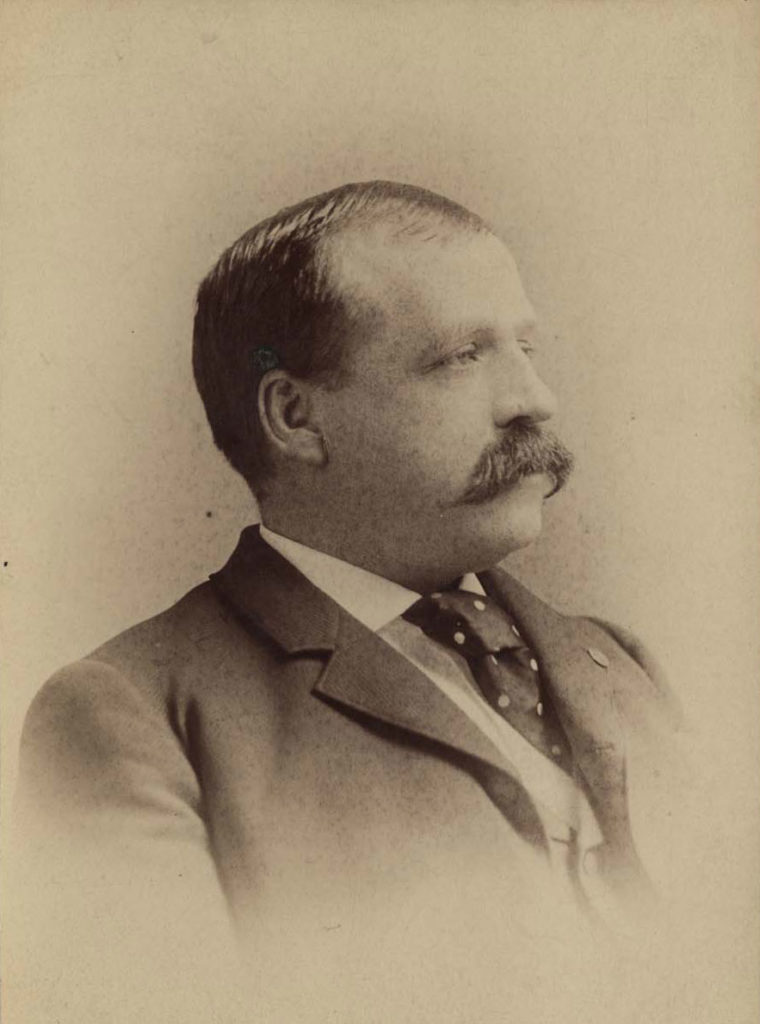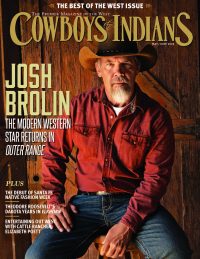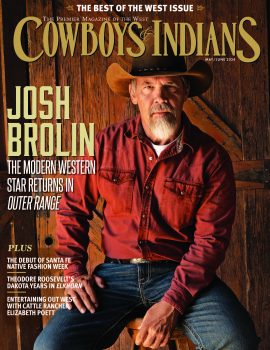Riding an orphan train west in 1859, a tough street kid named John Brady formed a friendship with fellow orphan Andrew Burke. One would grow up to govern Alaska; the other, North Dakota.
In a little-known but historic migration that began in the mid-1800s, some 250,000 orphaned, abandoned, and homeless children in the East were put on westbound trains in the hopes of finding loving adoptive homes. It was called the Orphan Train Movement, and among its success stories were riders who grew up to become judges, college professors, bankers, journalists, physicians, farmers, ranchers, clergymen, artists, high school principals, and the wives of men at all levels of society. Two became members of Congress.
The most remarkable rags-to-riches story, however, belongs to an Irish-American street urchin named John Brady, and his friend Andrew Burke.
They met on an orphan train going to Indiana in August 1859. John Brady was 11 years old and had the initials “JB” tattooed on his elbow. His mother had died when he was a toddler. His father beat him in alcoholic rages. He ran away when he was 8, and hardened into a miniature street tough, cocky and quick with his fists. To survive, he stole lead from chimneys, ran errands for saloon patrons, sang Irish ballads for pennies on Broadway, and begged spare change with his grimy little hand stuck out. In his unpublished autobiography, Zigzags of a New York Streetboy, Brady writes that he was rescued from the gutter by Theodore Roosevelt Sr., the father of the president, but in a letter to the founder of the Orphan Train Movement, the Rev. Charles Loring Brace, he identifies his savior as an agent of the Children’s Aid Society.
John G. Brady. Photography: Public DomainBrady was taken into a shelter and then sent west on a train with 27 other children. Like most orphan-train riders, his first impression of rural America was one of loneliness and mournful emptiness. He thought the trees were beautiful, and when he saw people setting fire to them to clear land for planting, he started sobbing and didn’t stop until he fell asleep.
Sitting next to him was a boy named Andrew Burke, also from an Irish Catholic background, also with a strong will and sharp intelligence. The two boys formed a deep friendship on the weeklong journey, and both would rise to be important figures in the American West. They got off the train in Tipton, Indiana, and were gathered into the dining room of a hotel. John Brady was picked out by a farmer, judge, and Indiana state senator named John Green. “I considered him the homeliest, toughest, most unpromising boy in the whole lot,” Green said later. “I had a curious desire to see what could be made of such a specimen of humanity.”
Green also needed help with farm chores, and despite an early attempt to milk a bull, John Brady soon made himself into a useful hand, although he never learned to enjoy farming. At school, he distinguished himself as a highly intelligent and motivated student, and also by flattening the class bully with a New York street punch. He fit right in to the loving Green family, changed his name to John Green Brady, and decided to become a minister. In 1870, he went back East to attend Yale Divinity School, stopping off in New York City to thank the CAS and see where he came from.
After graduating from Yale in 1874, he moved to New York City and, like his hero Charles Loring Brace, studied at the Union Theological Seminary, and worked in city missions. Brady wanted to devote his life to helping New York street kids, but at the same time, he pined for the West. During a long talk with Brace one night, they decided he should set up a school for adolescent boys in Texas.
Brady went west again and found a suitable piece of land on the Brazos River, but his investors backed out on him. He was invited to be a pastor in Colorado, but he went instead to Alaska, where he founded a Presbyterian mission in the rough little panhandle village of Sitka, which also served as Alaska’s capital. It was 1878, and only 200 white Americans lived in the entire state.
On the edge of Sitka was a desperately impoverished neighborhood called “the Ranche.” It was inhabited by Tlingit Indians, and its social problems — alcoholism, thievery, prostitution, child abuse — reminded Brady of the New York slums. He founded a maternity hospital there, an all-Native police force, and the Sitka Training Institute, which schooled its students in reading, writing, arithmetic, religion, needlework, weaving fishing nets, and the operation of cannery and sawmill equipment.
Brady learned the Tlingit language, collected tribal art, and found much to admire in Tlingit culture, although he abhorred their indigenous religion, and their custom of enslaving their enemies. Brady himself was charged with slavery by his enemies for using unpaid Tlingit apprentices to operate his extremely profitable sawmill; he saw it as on-the-job training.

In 1884, Brady was appointed as one of Alaska’s four commissioners, a position similar to a justice of the peace. Then he studied the law and became Judge Brady. In 1897, he was appointed as governor of Alaska and served during the wild onslaught of the Klondike Gold Rush. In the first lightless winter, so many prospectors went mad from cabin fever that Brady had to order the construction of an insane asylum.
He served three terms as governor, fought hard for Native Alaskan tribes, and traveled frequently to Washington to lobby for their rights. On one of those trips, at the Indian School in Carlisle, Pennsylvania, he shared a stage with the former governor of North Dakota, who was none other than Andrew Burke, his friend from the orphan train nearly 40 years before.
Burke retired to Roswell, New Mexico, and lived out his days there. John Green Brady fell under the spell of a con artist in Alaska, went into business with him, lost everything, including his reputation for honesty, and was forced to resign as governor. In 1911 he took a job at a printing company in New York City and lived in Manhattan for five years before returning to Alaska. He still carried himself with the cockiness and upturned chin of a street tough, but he was in poor health and died in Sitka in 1918, the same year that Andrew Burke died in New Mexico.













